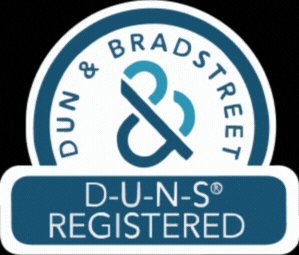Rootstock Order Management: Simplifying Sales and Fulfillment with Rootstock ERP

Introduction:
Rootstock Order Management integrated with Salesforce CRM with Rootstock provides a unified solution for manufacturing, distribution, accounting, inventory management, and supply chain operations. This powerful combination enables organizations to manage and grow their business on a single cloud-based platform.
As trusted Rootstock ERP Partners, we aim to highlight key features and benefits of Rootstock ERP, focusing specifically on the fundamentals of Sales Order Management in Rootstock.
Rootstock Order Management Overview
Rootstock ERP supports flexible and scalable Rootstock Order Management processes, from sales order entry to final invoicing. With a user-friendly interface and seamless Salesforce integration, Rootstock simplifies complex order workflows.
As Rootstock cloud ERP Partners, we would like to highlight some features which Rootstock ERP provides:
- Easy to adapt to existing business.
- Sales Order Management
- Material Requirements Planning,
- Supply Chain Management (SCM),
- Combined with Salesforce CRM
- Accounting (AR Balance etc.)
Here we will be focusing on the basics of Order Management in Rootstock ERP

Fig. Sales Order Life Cycle
Sales Order
A Sales Order is a formal customer request for products or services. Within Rootstock ERP, Sales Orders can be created and managed effortlessly. The system allows users to enter customer details, product data (SKUs, quantity, unit price), and track inventory and billing statuses.
Sales Orders in Rootstock are structured using a Header and Line format. Users can create a new Sales Order using the “New” button on the Sales Order Header tab. The Header includes customer name, order type, A/R balance, and other key data. The Line contains item-level information such as quantity ordered, unit price, discounts, and product types.

Fig. Create New Sales Order
The Sales Order Header contains all information related to Sales Order like Customer Name, Order Date, Order Type, Current A/R Balance, Cancellation Reason, Close Reason etc. and the Sales Order Line contains all product information that are sold to customer like Product Name, Product type, Qty Ordered, Discount Percentage, Unit Price, Sales UOM (Unit of Measure), Sales Order Line Number etc. Rootstock ERP provides solution for both B2B and B2C businesses to use this service so that it can be seamless.
Benefits of Rootstock Order Management
- Paperless operations and time-saving automation
- Real-time cloud access through Salesforce CRM with Rootstock
- Enhanced customer satisfaction
- Improved inventory visibility and accuracy
- Seamless integration with financials for orderly accounts
Sales Orders and Related Documents
Quotes
In Sales Order Management in Rootstock, quotes represent an offer to a customer. Once accepted, they are converted into Sales Orders. Unlike Sales Orders, quotes do not influence inventory or planning unless specifically configured.
Purchase Orders
Sales Orders are internal records for vendors, while Purchase Orders are outward-facing documents used as legal agreements with customers. This distinction is critical within Rootstock ERP for correct transactional flow.

Invoices
After fulfillment, a Sales Order leads to an invoice. The invoice documents the charges for products/services, differentiating from the order confirmation stage represented by the Sales Order.
Rootstock Sales Order Fulfillment Process
Rootstock Sales Order Fulfillment involves picking, packing, and shipping processes required to complete a sales order. These actions are managed via the Fulfillment Workbench or the Sales Order Processing App. The user takes the Firm Sales Order Lines through the steps needed to pull the material from inventory (Pick), package it (Pack), and ship it means making the order ready to Invoice. However, if the buyer (customer) wants to return a product that was bought, Sales Order Fulfillment manages the return transaction as well.

Fig. Sales Order Fulfillment Steps to Process
The Sales Order Fulfillment Workbench through the App Launcher or the out-of-the-box Sales Order Processing App.

Fig. Rootstock Sales Order Fulfillment Screen
To fulfill a Sales Order Line, the Line must be Firmed (status 2), and there must be available on-hand Inventory. The Sales Order Fulfillment application includes steps to (optionally) reserve the Products from stock (Allocate), remove the Products from Inventory (Pick), package them (Pack), optionally move them to a shipping container along with other Products being shipped, ship the Product (Ship), create the shipping documents, and invoice.
Sales Order Pick
The Sales Order Pick is the step to pull the Inventory for the selected Products. The “Quantity Issued” counter is increased during the Pick process. If in case the Inventory is found in multiple Locations, you need to select from which the Inventory is to be pulled.
Sales Order Pack
After Packing the materials, Sales Order Pack is the next step. When this step is completed then “Qty Packaged” counter increase and Sales Order Shipper (Shipper Header) and Packing Slip are created. Rootstock provides an add-on package called Rootforms, which has inbuilt features to create and generate the packing slips.
Sales Order Shipment
Once the Products have been Picked and Packed using Fulfillment screen, the next step is to select Ship checkbox for the packaged Products. After Shipment the selected Products are no longer counted in the Company Inventory and the Quantity Shipped counter also increases. When the Shipment step has been completed, the Sales Order is ready to be invoiced.
Sales Order Invoice
An invoice is generated once shipment is complete. It is the final step in the Rootstock Sales Order Fulfillment cycle.

Fig. Rootstock Invoice Cycle
Sales Order Close
A Sales Order is closed once all items are shipped and invoiced. It can be closed manually or automatically, ensuring no further actions are allowed on the order.
Reverse Sales Order Fulfillment
Rootstock ERP allows users to manage returns effectively using the Fulfillment Return Transaction screen. This helps businesses maintain accurate records and streamline customer service.

Fig. Rootstock Sales Order Fulfillment Return Transaction Screen
Shipments and Tracking
Rootstock ERP Implementation includes integration with external shipping carriers. This allows users to manage logistics, track orders in real time, and update customers about delivery statuses. Tracking information is maintained within Rootstock ERP for visibility.
Conclusion
Rootstock Order Management centralizes data, streamlines sales processes, integrates with cloud-based systems, and facilitates collaboration across teams. Through automation and real-time tracking, Rootstock ERP significantly enhances operational efficiency. Order management is just one aspect of Rootstock ERP Implementation that empowers businesses with a comprehensive, scalable solution for modern supply chain and inventory management needs.


